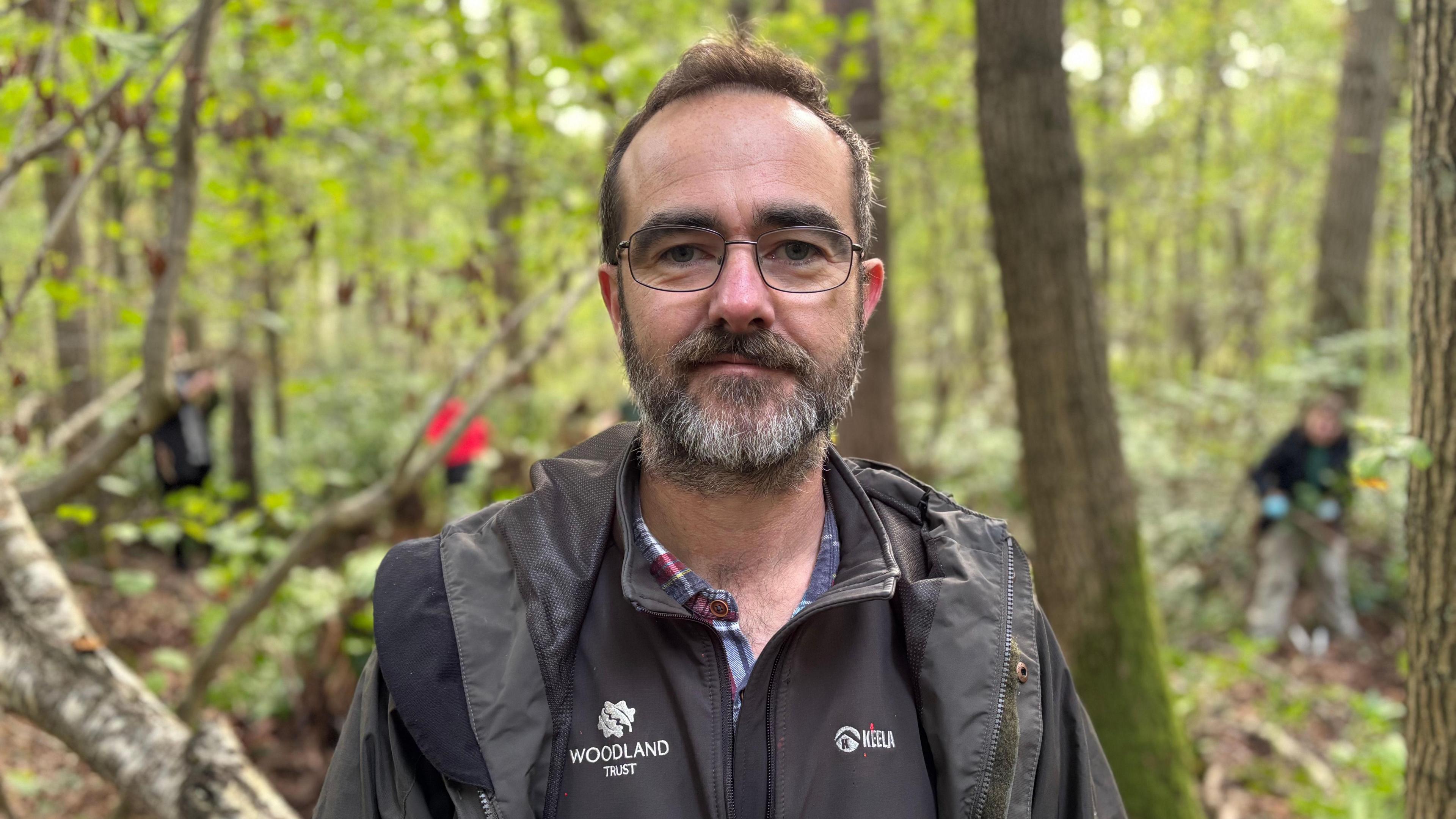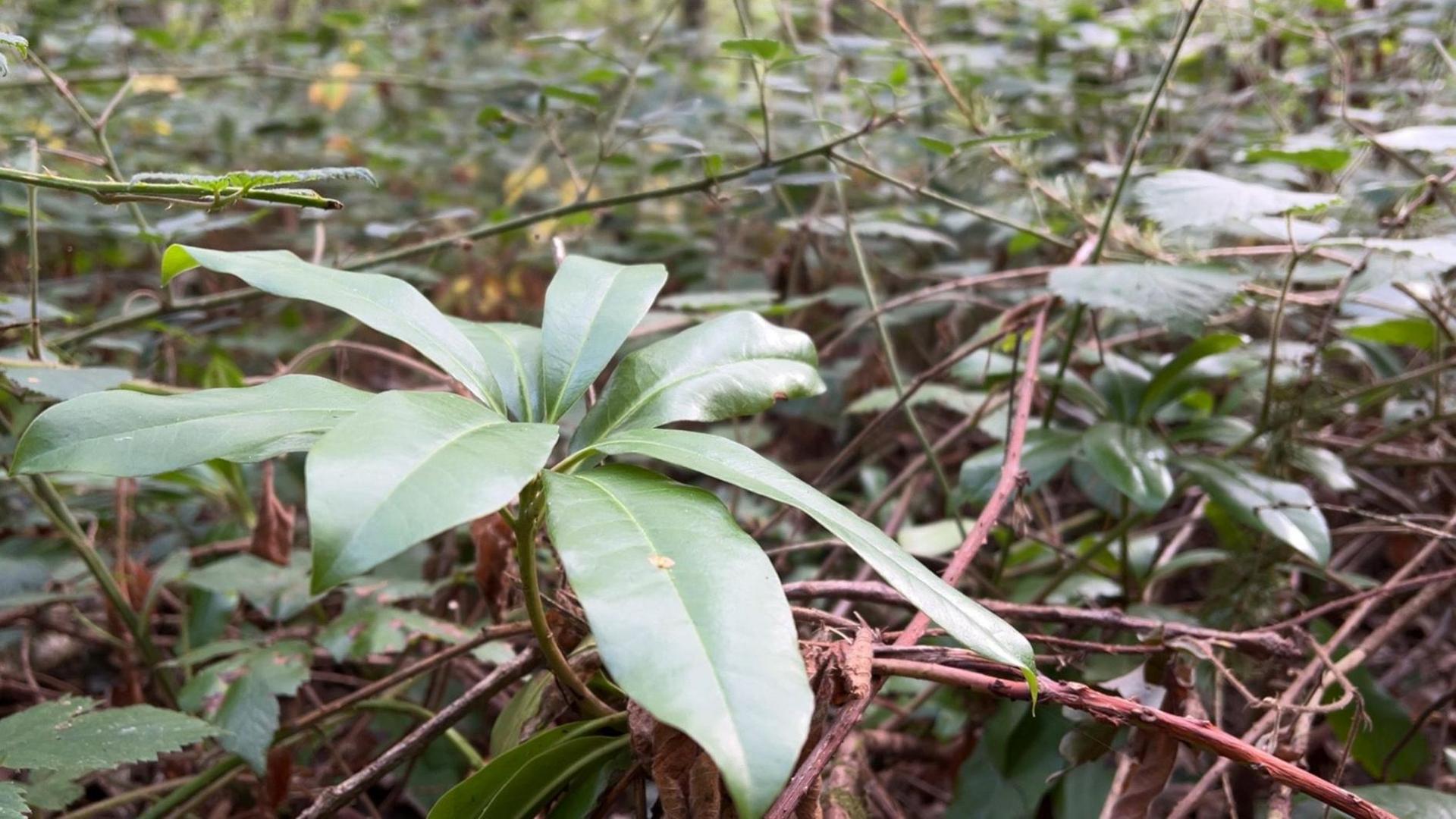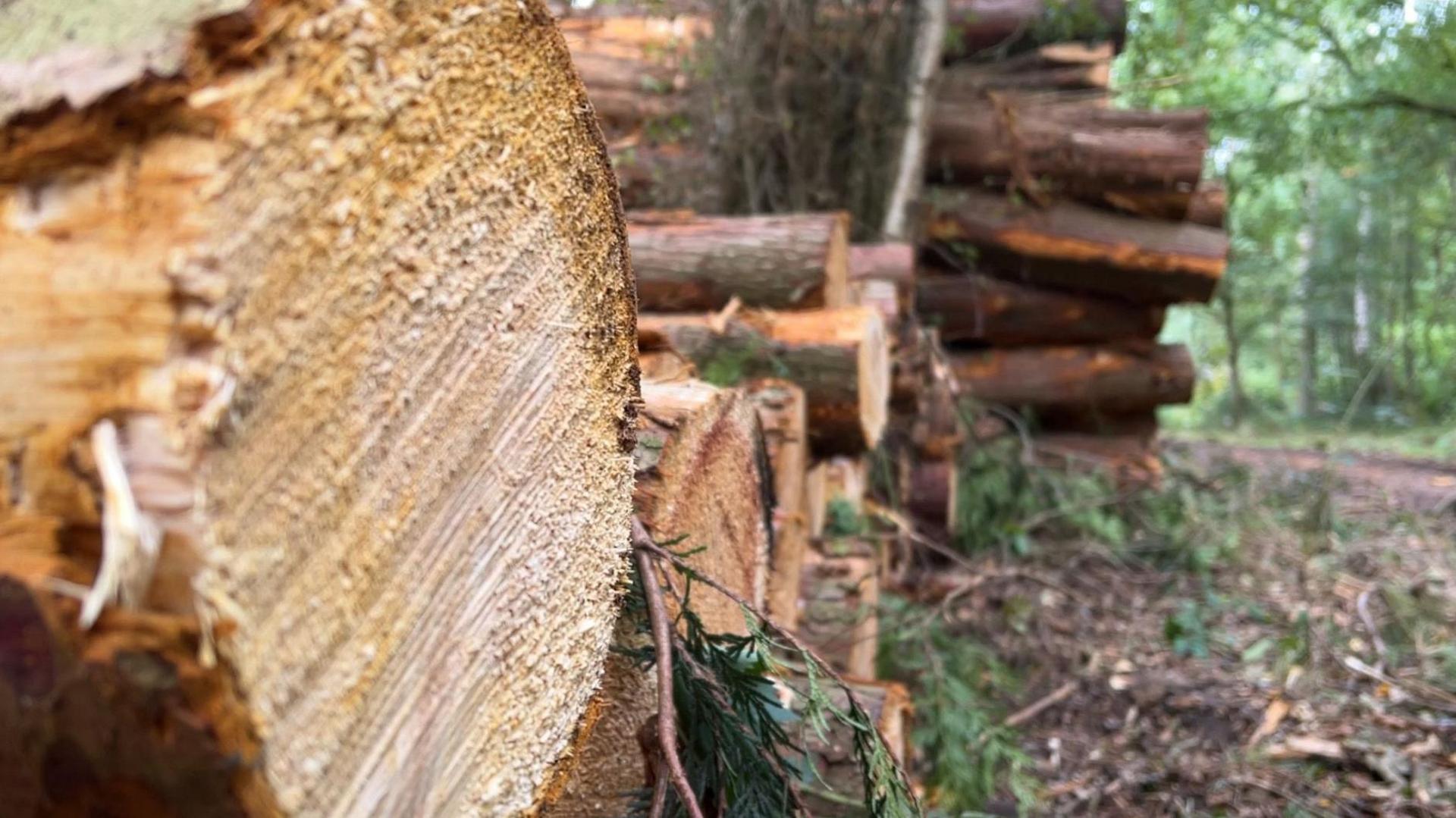Invasive plants cleared from ancient woodland

David Logan said non-native species needed to be cleared to help biodiversity
- Published
Invasive plant species are being cleared from ancient woodland in a bid to encourage the "natural regeneration" of native trees, the Woodland Trust has said.
The charity said areas such as Martinshaw Wood, a 100-hectare site on the outskirts of Leicester, are some of the UK's richest habitats and play a crucial role in combating climate change by storing carbon.
Plants such as rhododendron, whilst attractive when in flower, can "choke" the forest floor by creating too much shade and reducing biodiversity, the trust said.
Site manager David Logan added the plant could smother the native flora.

Rhododendron can "choke" the forest floor
Mr Logan explained it is "very good at growing back-to-back and dominating the understorey", the layer of vegetation beneath the forest canopy.
He added while the trust could sometimes "get a little bit of flak from the public" for clearing the plants, it was necessary to aid restoration.
"Take humans away from this woodland, in a couple of hundred years' time you'd probably find there would be nothing here but rhododendrons with a few old trees poking through it," he said.
The charity is also in the process of felling non-native trees planted several decades ago which have now reached "economic maturity".
Martinshaw Wood is classed as a Plantation on Ancient Woodland Site (PAWS) - areas which were cleared and replanted after World War Two when Britain needed to replenish its supply of timber.
Faster-growing conifers were planted in place of native broadleaf trees such as oak and birch.
"Conifer trees don't lose their needles," Mr Logan said.
"They grow and grow until their canopies touch and no light will reach the woodland floor, so you end up with no ground flora, no understorey, no young trees."
The trust said about 40% of the UK's ancient woodland had been damaged in this way.

Non-native trees were planted because they grow more quickly
Regional director at the trust, Ian Froggatt, said conifers were planted "with the best of intentions".
"At the time, it was the saviour of the country," he added.
"We now know, with our modern eyes, that actually that was ecologically pretty disastrous."
The restoration work is being part-funded by donations from energy company E.ON Next.
Commercial director Jean Coleman said: "We really want to help protect the environment and we know our customers do, too.
"We're very proud of our partnership with the Woodland Trust, where over the next three years we will donate at least £500,000 to the charity's projects."
Get in touch
Tell us which stories we should cover in Leicester
Follow BBC Leicester on Facebook, external, on X, external, or on Instagram, external. Send your story ideas to eastmidsnews@bbc.co.uk, external or via WhatsApp, external on 0808 100 2210.